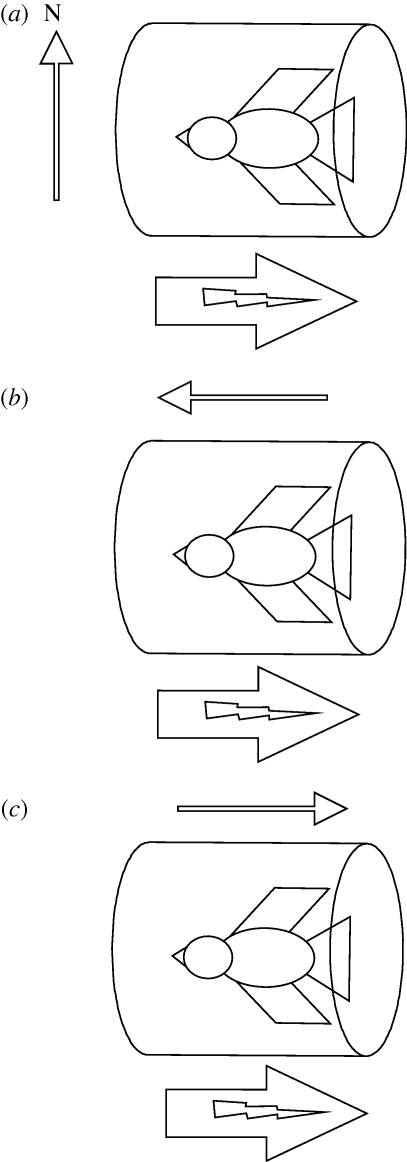Figure 1.
A schematic of the alignment of the pulse relative to the bird and the magnetic field or biasing field. (a) Perpendicular pulse. The bird is placed in the pulse coil with its head facing the direction of the pulse and no artificial biasing field. As the pulse coil is aligned west to east, the pulse is perpendicular to the only biasing field present, that of the Earth's magnetic field. This treatment shifts the orientation of migratory birds by 90° in orientation cages (e.g. Wiltschko et al. 1994). (b) Antiparallel pulse. The bird is placed in the pulse coil with its head facing the direction of the pulse. An artificially produced biasing field is activated in the opposite direction to the pulse. This treatment reverses the swimming direction of magnetotactic bacteria (Blakemore et al. 1980), but results in a bi-modal east–west orientation in migratory birds in an orientation cage (Wiltschko et al. 2002). (c) Parallel pulse. The same as in (b), except the artificial biasing field is aligned in the same direction as the Earth's magnetic field. This treatment does not change the swimming direction of magnetotactic bacteria, but results in a bi-modal east–west orientation in birds in an orientation cage (Wiltschko et al. 2002).

